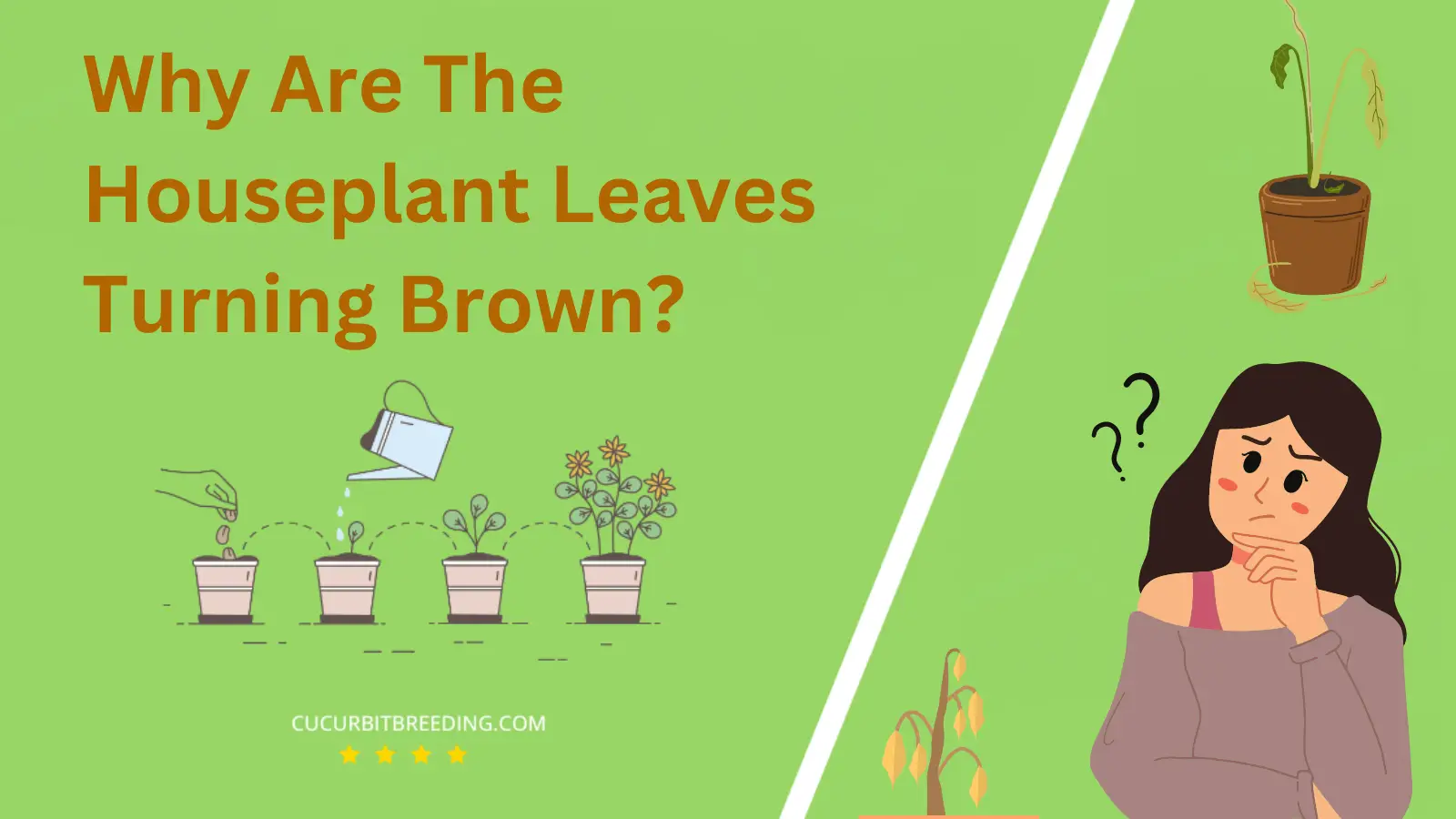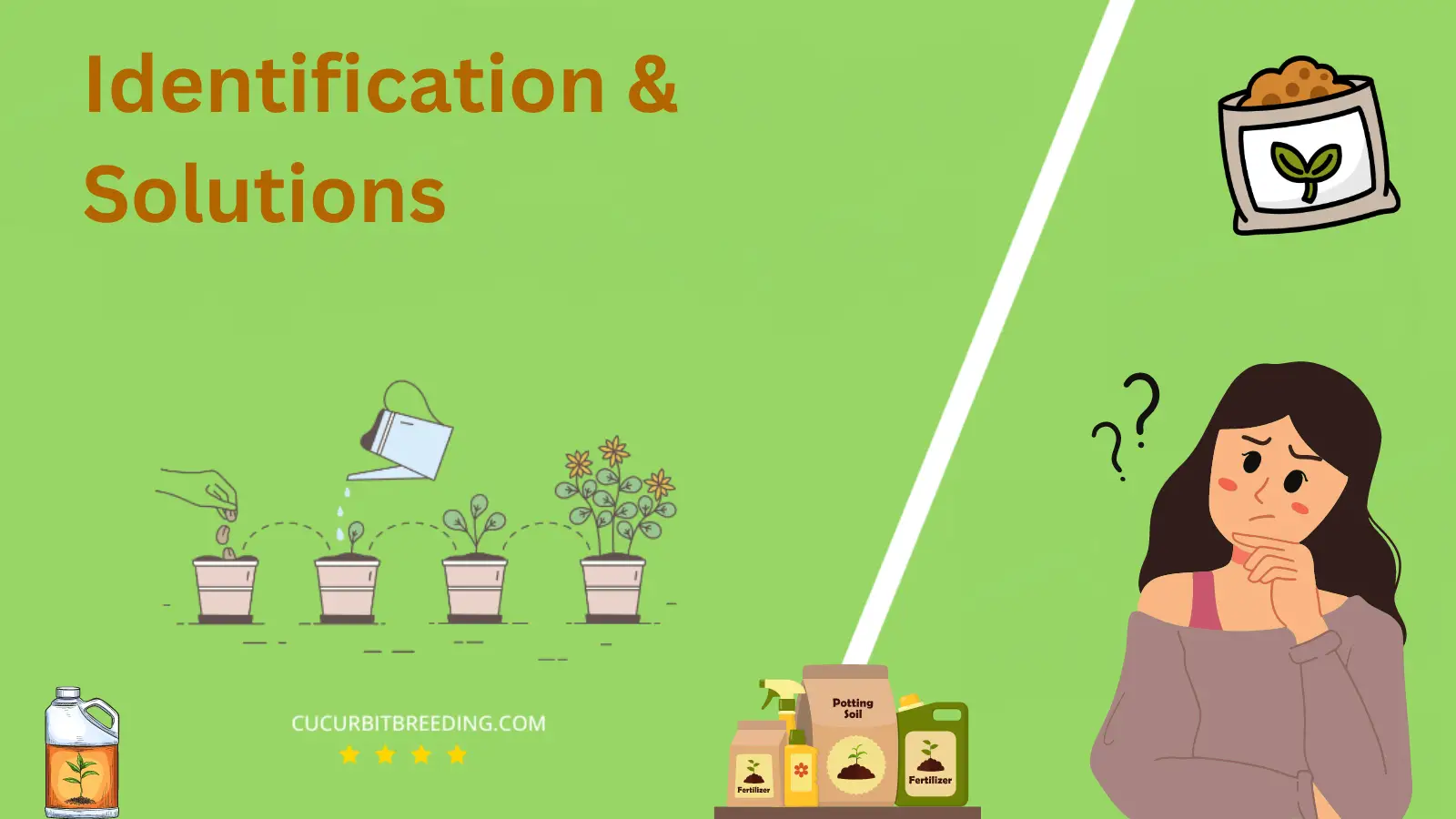
Are the leaves on your prized houseplants beginning to resemble a sepia-toned photograph, leaving you scratching your head in confusion? Brown leaves are a common issue that many houseplant owners face at some point. But, what are the real reasons behind this change of color?
This unexpected transformation could be the silent scream of your leafy companions, a crucial sign that something is amiss. Curious? Let’s uncover the truths hidden in those brown-tinged leaves together.
Why Are The Houseplant Leaves Turning Brown?
Brown leaves on your houseplants could indicate several issues, from too much direct sunlight to improper watering habits. Overwatering or underwatering can stress the plant and lead to browning. Alternatively, exposure to extreme temperatures can also cause leaf discoloration. Lastly, nutritional deficiencies might be causing the leaves to brown. Continue reading for a more detailed examination of these potential causes and their solutions.
1. Overwatering
| Description | Overwatering causes the roots to suffocate, leading to impaired nutrient uptake and browning leaves. |
|---|---|
| Solution | Increase humidity by misting leaves or placing a humidifier nearby to prevent dehydration and browning. |
Overwatering can cause houseplant leaves to turn brown. When plants receive excess water, their roots become waterlogged, leading to a lack of oxygen in the root zone. This oxygen deprivation prevents the roots from absorbing nutrients properly, resulting in browning leaves. Additionally, overwatering creates a favorable environment for fungal and bacterial growth, which further damages the plant’s roots and leaves.
To address the issue of brown leaves due to overwatering, it is crucial to adjust the watering routine. Firstly, ensure that the plant is placed in a well-draining pot with sufficient drainage holes. This allows excess water to escape, preventing water accumulation around the roots. Secondly, it is advisable to check the moisture level of the soil before watering. Inserting a finger or a moisture meter into the soil can help determine if watering is necessary. If the soil feels damp or moist, it is best to delay watering.
Furthermore, when watering, it is essential to provide the plant with the right amount of water. Avoid overwatering by ensuring that the excess water drains out from the drainage holes. Discard any water that collects in the saucer or tray beneath the pot. Additionally, it can be helpful to establish a watering schedule based on the specific needs of the plant species. Some plants require less frequent watering, while others may need more.
Lastly, if the plant has already experienced damage due to overwatering, it is crucial to address the root problem. Gently remove the plant from its pot and inspect the roots for signs of rot or disease. Trim off any damaged or mushy roots and repot the plant in fresh, well-draining soil. This allows the plant to recover and encourages healthy root growth.
By adjusting the watering routine, ensuring proper drainage, and addressing any damage or disease caused by overwatering, the issue of brown leaves can be resolved, promoting healthier growth and overall plant vigor.
2. Underwatering
| Description | Overwatering causes the roots to suffocate, leading to impaired nutrient uptake and browning leaves. |
|---|---|
| Solution | Increase watering frequency to provide adequate moisture for the plant’s leaves to prevent browning. |
Underwatering is a common reason for houseplant leaves turning brown. When a plant does not receive an adequate amount of water, it begins to experience moisture stress, which manifests as browning leaves. Insufficient water supply restricts the plant’s ability to transport nutrients, causing the leaves to dry out and die. To address this issue, it is crucial to adjust the watering schedule for the affected plant and ensure it receives enough water to maintain proper hydration.
Regularly check the moisture level of the soil by sticking your finger into it up to the first knuckle; if it feels dry, it’s time to water the plant. Additionally, consider placing a saucer or tray beneath the pot to catch excess water and provide sufficient humidity. Adjusting the watering routine and ensuring proper hydration will help prevent further browning of the houseplant leaves.
3. Lack of humidity
| Description | Low humidity causes water loss in the leaves, leading to browning due to dehydration. |
|---|---|
| Solution | Increase humidity by misting leaves or placing a tray of water nearby. |
The lack of humidity can cause houseplant leaves to turn brown. When the air in the environment is too dry, it can lead to excessive moisture loss from the leaves, resulting in dehydration. As a result, the leaves may start to turn brown and eventually die off. To address this issue, increasing the humidity levels around the plant is crucial. One solution is to place a humidifier near the plant or create a pebble tray by placing a shallow dish filled with water and pebbles underneath the plant’s pot. The water will evaporate, increasing the humidity in the surrounding air. Alternatively, misting the leaves of the plant regularly with water can also help provide some moisture. Additionally, grouping houseplants together can create a microclimate with higher humidity, as plants release moisture through transpiration. By addressing the lack of humidity, the browning of houseplant leaves can be minimized, promoting healthier growth.
4. Too much direct sunlight
| Description | Low humidity causes water loss in the leaves, leading to browning due to dehydration. |
|---|---|
| Solution | Increase humidity by misting leaves or placing a tray of water nearby. |
The reason why houseplant leaves turn brown is due to excessive exposure to direct sunlight. When houseplants receive too much direct sunlight, it can cause the leaves to become scorched, resulting in browning or yellowing. This occurs because the intense sunlight damages the plant cells, leading to discoloration.
To address this issue, it is essential to provide shade or move the houseplant to a location with less direct sunlight. Placing the plant near a window with sheer curtains or blinds can help filter the intense light. Additionally, rotating the plant regularly can ensure that all sides receive an equal amount of light, preventing uneven browning.
In cases where it is not possible to relocate the plant, using a UV-filtering film on the windows or applying a sheer cloth over the plant during peak sunlight hours can help reduce the intensity of direct sunlight. Furthermore, providing adequate watering and ensuring proper humidity levels can also contribute to maintaining healthy foliage and preventing leaf browning.
By addressing the issue of too much direct sunlight, implementing shading techniques, and maintaining appropriate plant care practices, the browning of houseplant leaves can be mitigated, allowing them to thrive and maintain their vibrant green color.

5. Nutrient deficiency
| Description | Increase humidity by misting leaves or placing a tray of water nearby. |
|---|---|
| Solution | Provide a balanced fertilizer to address nutrient deficiency and promote healthy green leaves. |
The reason why houseplant leaves turn brown is often due to nutrient deficiency. When plants lack essential nutrients such as nitrogen, phosphorus, or potassium, it can result in brown spots or discoloration on the leaves. This occurs because these nutrients play crucial roles in various plant processes, including photosynthesis and cell growth. Without an adequate supply of nutrients, the plant struggles to maintain its normal functions, leading to browning leaves.
To address this problem, providing the plant with the necessary nutrients is crucial. Regularly fertilizing the houseplant with a balanced fertilizer can help replenish the deficient nutrients. It is important to follow the specific fertilization instructions for the particular type of houseplant, as different plants have varying nutrient requirements. Additionally, ensuring that the houseplant is placed in a suitable environment with proper lighting conditions and appropriate temperature and humidity levels can also contribute to its overall health. Proper watering practices, avoiding overwatering or underwatering, are equally vital in preventing nutrient deficiencies and maintaining healthy leaves. By addressing the nutrient deficiency through proper fertilization and creating an optimal environment for the plant, the browning of houseplant leaves can be mitigated, promoting healthier growth and vibrant foliage.
6. Pests or diseases
| Description | can damage the cells in houseplant leaves, causing them to turn brown. |
|---|---|
| Solution | Apply organic insecticidal soap or neem oil to eliminate pests and prevent diseases. |
The reason for houseplant leaves turning brown could be due to pests or diseases. Pests such as spider mites, aphids, or mealybugs can infest the plant and feed on its leaves, causing them to turn brown. Similarly, diseases like fungal infections or bacterial leaf spot can also lead to browning of the leaves. These issues can affect the overall health and appearance of the plant, hindering its growth and vitality.
To address this problem, it is essential to identify and eliminate any pests present on the plant. This can be achieved by regularly inspecting the leaves and stems, using insecticidal soaps or neem oil, or introducing natural predators like ladybugs. Additionally, maintaining proper hygiene by removing any fallen leaves or debris can help prevent disease development. If a disease is detected, using appropriate fungicides or following recommended cultural practices like watering the plant at the base instead of overhead can mitigate the issue.
Providing adequate sunlight, proper watering, and ensuring good air circulation around the plant can also promote its overall health, making it less susceptible to pests and diseases. By addressing these factors, the houseplant’s leaves can regain their natural color and vitality.
7. Environmental stress
| Description | such as excessive sunlight or lack of water can cause houseplant leaves to turn brown. |
|---|---|
| Solution | Increase humidity by misting leaves daily or placing a tray of water nearby to prevent dehydration. |
The reason why houseplant leaves turn brown is due to environmental stress. Environmental stress can be caused by various factors, such as improper watering, insufficient lighting, extreme temperatures, or inadequate humidity levels. When houseplants are exposed to these unfavorable conditions, it can lead to leaf discoloration and browning.
To address this issue, it is essential to identify the specific environmental stressors affecting the plant and take appropriate measures to alleviate them. Firstly, ensure proper watering by allowing the top inch of soil to dry out before watering again, as overwatering can lead to root rot. Additionally, provide adequate light for the plant’s specific needs, considering factors like the plant’s natural habitat and light requirements. If necessary, move the plant to a location with more suitable lighting conditions.
Moreover, maintaining a consistent temperature within the plant’s preferred range can help prevent leaf browning. Avoid exposing the plant to extreme temperature fluctuations, drafts, or direct heat sources. Lastly, consider the humidity levels in the plant’s environment. Some houseplants, especially those originating from tropical regions, thrive in higher humidity. Mist the leaves or use a humidifier to increase humidity if needed.
By addressing these environmental stressors and providing the necessary care, the houseplant’s health can be restored, and the browning of leaves can be prevented.